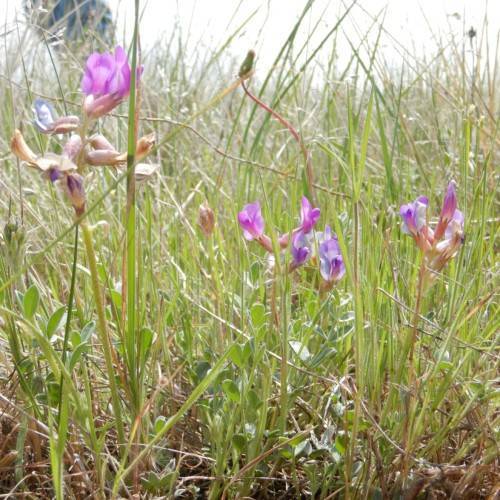
Prairie Milkvetch
Astragalus flexuosus var. flexuosus
Also Known As - Flexile MilkvetchWatering:
Minimal
Hardiness Zone:
Sun:
full sun,part shade
Fruits:
Fruits Ready In Summer
Leaf:
Yes
Growth Rate:
Low
Drought Tolerant:
Yes
Care Level:
Medium
watering
Prairie Milkvetch (Astragalus flexuosus var. flexuosus) requires regular watering once every 2-3 weeks during its summer growing season. Make sure that soil is moist but not soggy. Water the plant deeply when necessary by allowing water to slowly soak into the ground to the root level. During the autumn and winter months, water less often, usually no more than once every 6-8 weeks. It is important to note that during the winter months the Prairie Milkvetch may remain dormant, so there may not be a need to water. Monitor the plant for foliage health to determine watering frequency.
sunlight
Prairie Milkvetch (Astragalus flexuosus var. flexuosus) is a sun-loving plant species that requires at least 4-6 hours of direct sunlight per day. It is best for the plant to receive the most sunlight during the warmer hours of the day, therefore the ideal exposure times would be between 8am-2pm. Though the plant may tolerate lesser amounts of direct sunlight (3-4 hours a day), it will thrive best with more time in the sun. Additionally, this species requires well-drained soil and prefers a slightly dry environment.
pruning
Prairie Milkvetch (Astragalus flexuosus var. flexuosus) should be pruned in late winter or early spring. Pruning should be done lightly, removing only the dead, damaged, or diseased branches. The plant should not be pruned too drastically, as this can reduce the number of flowers the plant produces and its overall aesthetic appeal. Pruning should be done with sharp, clean shears to ensure a proper, clean cut. This pruning should also be supplemented with an annual thinning of the whole plant. During this thinning, it is important to remove excessively crowded or weak growth, and any shoots that are growing straight up.
